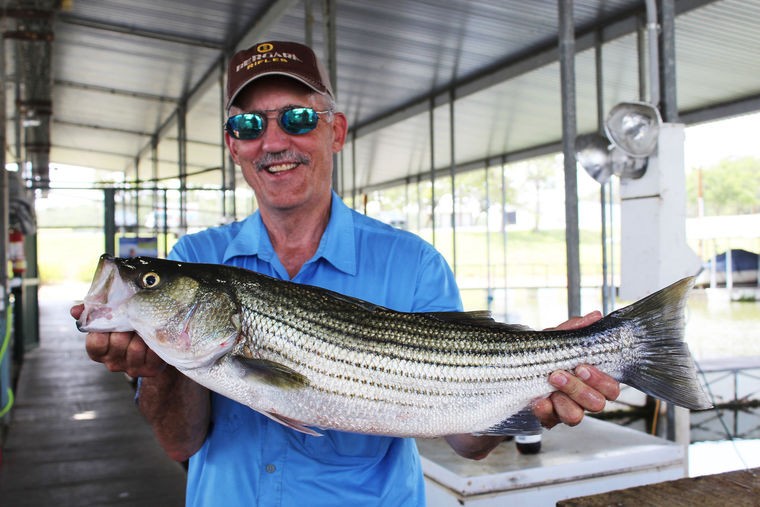I was going to be in North Texas for a week, so I thought I’d line up a striper fishing trip.
I’d met Bill Carey, owner of Striper Express, at the Dallas Safari Club Convention and Expo years ago, so I gave him a call. One thing led to another and I was soon lined up to fish with his son Chris.
On this trip, Bob Fleming and my brother Eddy would also be going. The guides down there use a deep boat that safely allows you to stand, cast and fight big fish. Chris' boat had a deep-hulled Falcon pushed with a 300-horsepower Yamaha. While following a school, the guides have remote-controlled trolling motors that can be controlled anywhere on the boat.
Their administrative assistant called me the day before to verify our trip and fill me in on last-minute details. She told me to be there at 6 a.m. However, she also said her guides were like racehorses, and more than likely they would be there loaded up early and ready to blow out of the gates. So instead, we hit the dock at 5:40 a.m., threw our gear on the boat and cruised out of the marina by 5:45 in the dark.
We were fishing on Lake Texoma, which was formed by damming up the Red River that separates Texas and Oklahoma. It is a big lake. Stripers were introduced years ago and took hold like a duck to water.
Temperatures had been scorching hot and water temperatures were up in the 80s, and by 10:30 a.m., the fishing had been dying down. But shortly after daylight, we were at his secret spot. The plan was to hit them fast and furious when they moved in along the shore. He had been smoking them there the last few days.
We started off using a 3/4-ounce jig tipped off with chartreuse Sassy Shads. We sat there for 10 to 15 minutes and then here they came. Their main prey are shad so where ever there is shad, there are stripers.
It’s always a rush when they’re schooling on top. You’ll flip out top water lures, and I’ve had three hits on one retrieve. Once, my lure was flipping in the air like a volleyball before one finally got hooked. This morning there were a few rises but most of the feeding was right below the surface, so we stuck with our Sassy Shads.
We hooked a few but they moved out fast. I don’t know if they moved down the shoreline or back out deep, but we lost them. If they’re surfacing, then of course they’re easier to follow.
Unfortunately, like many fishing excursions, you know what happens when a school of fish is by a fleet of boats clustered together. This instance was no different. It got dry fast, so we took off across the lake to a different spot. This time we pulled into a rocky bank and there were already 15 boats there. And they were catching fish.
When you pull up to a school, you don’t want to blow into the middle. Circle in, kill your motor and do your final approach with the trolling motor. If you blow into a school, you’ll spook them and they’ll go down.
These fish were moving along pretty fast, but we were able to keep up with them for a bit and hooked a few. Of course, everyone likes taking fresh pics but as a general rule, when you get into them and it’s hot and fast, you better be catching all you can and then take pics later. It can shut down just as fast as it started.
With the above said, you don’t want to spend a lot of time digging lures out of a deeply hooked fish. A buddy’s uncle invented a device he calls the OUT Tool built by Quarrow. Check them out. Unhooking a 10- to 15-pound striper can get dangerous when the fishing is hot and heavy. The OUT Tool would also be good for getting the hook out of a catfish after he has swallowed it. It pries open the fish’s mouth, and then you can pull the hook out with a pair of needle-nose pliers.
Now the fish were getting tough to locate. We hit some humps, but by now the weather was hot. All the other guides had headed back to the dock, but Chris kept trying. We picked up a few more, but it got tough.
Well, then it was finally time to head in and clean our fish. We’d thrown 20 in the box, so it’d been a fun trip. If you’re down in that neck of the woods, give Striperexpress.com a call 903-786-4477.
Tom Claycomb lives in Idaho and has outdoors columns in newspapers in Alaska, Idaho, Utah, Nevada, Colorado and Louisiana. He also writes for various outdoors magazines and teaches outdoors seminars at stores like Cabela’s, Sportsman’s Warehouse and Bass Pro Shop.



